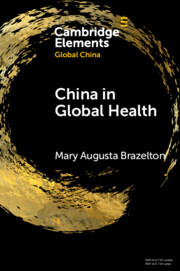Element contents
China in Global Health
Published online by Cambridge University Press: 14 January 2023
Summary
- Type
- Element
- Information
- Series: Elements in Global ChinaOnline ISBN: 9781009042666Publisher: Cambridge University PressPrint publication: 09 February 2023
References
- 3
- Cited by



